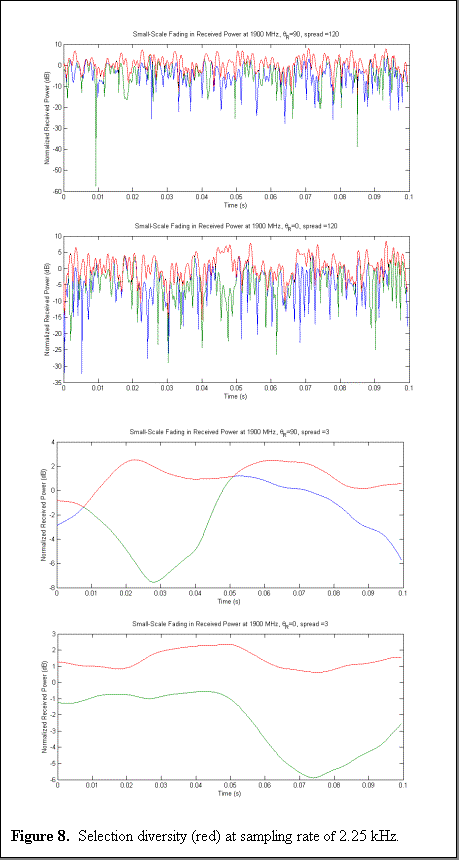ECE 3065: Electromagnetic Applications |
Ryan J Pirkl gtg203a@prism.gatech.edu April 22, 2004 |
| Design Problem | Proposed Solution | Channel Model | Switching Rate | Results & Conclusions | References |
Results and Conclusions
Using a sampling speed 2.25 kHz, it is possible to generate new small-scale fading plots of the signal strength as a function of time as seen from the receiver due to the diversity selection algorithm. The plots below show the four cases again, but with the signal as seen by the receiver overlaid in red.
 |
In rural environments with little multipath, the benefit of the selection diversity antennas is minimal. The two signals received by the antennas are tightly correlated and suffer from very little small-scale fading. However, in more urban environments where the azimuth spectrum is nearly omnidirectional, the diversity antennas significantly improves performance. As a qualitative analysis shows, the level-crossing rate and average fade duration are greatly improved upon as compared to the single antennas (shown in green and blue).
| Design Problem | Proposed Solution | Channel Model | Switching Rate | Results & Conclusions | References |